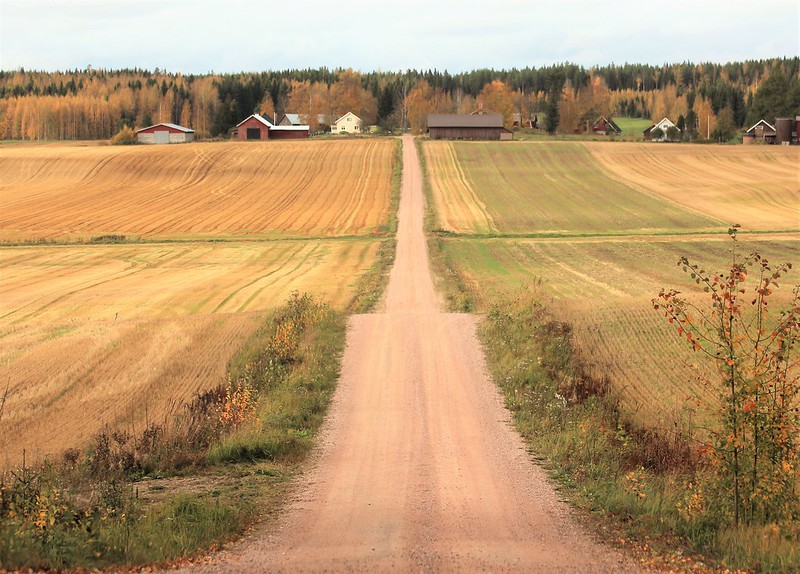State of rural journalism: Buyers needed, news deserts expanding
The challenges of rural journalism are mainly the challenges of the communities it tries to serve, and many of those challenges are daunting. But they are not dispositive. That was made clear at the National Summit on Journalism in Rural America by some sharp, innovative and courageous editors, publishers, academics and other journalism supporters.
“Community newspapers are still trusted” more than other news media, said Lynne Lance, executive director of the National Newspaper Association, citing the recent survey done for NNA in its the markets of its members, mainly weeklies and small dailies.
But more broadly, when you ask how America’s rural newspapers are doing, you also need to ask, and answer, this question: “How is rural America doing?” said longtime Georgia publisher Robert M. Williams Jr.. “It’s hard for any newspaper to ever rise above the quality of the community it operates in,” but there are exceptions, he said.
The biggest problem in most rural communities is shrinking population, and that’s a problem for their news media, as well as the shift of retail business to big-box stores that advertise little, said Tony Baranowski, co-publisher of the Times Citizen in Iowa Falls, Iowa.
For many older newspaper owners in small towns, the biggest problem is finding an acceptable buyer for their newspaper.
“What we see are thousands of independent owners across the country who want to leave their legacy but don’t have someone to buy their paper,” Elizabeth Hansen Shapiro of Columbia University said Saturday morning. She is founder of the National Trust for Local News, which tries to keep local news media in local hands, rather than profit-motivated chains or politically motivated buyers.
Sharon Burton, editor-publisher of the Adair County Community Voice in Columbia, Kentucky, said she makes money so she can be in the newspaper business. “I’m not in the newspaper business to make money,” like most recent buyers. “It’s obvious by the quality of what they’re doing that they’re not in it because they love newspapering. I think they’re part of our problem, because they hurt our reputation.”
Some owners who don’t want to sell to such buyers just close their papers, and some such buyers eventually merge or close them, or strip them down so much they create what Penny Abernathy of Northwestern University calls a news desert: a community “with limited access to the sort of credible news and information that feeds democracy at the grassroots level and helps residents make wise decisions about issues that will affect their quality of life and that of future generations.”
Social and political divisions are a growing problem for rural communities and their newspapers. Bill Horner, publisher of the Chatham News+Record in North Carolina, said his county is so divided along racial and political lines that it made him and his partners question whether it was still a place for a general-interest newspaper.
Dink NeSmith is a newspaper chain co-owner who came out of retirement to save The Oglethorpe Echo in northeast Georgia and made it a nonprofit staffed by University of Georgia students. “We began to cover the Black community for the first time,” The county is 17% Black. He said a Black truck driver was appreciative, and donated $500.
In fact, as more higher-education journalism programs try to serve community journalism, one professor who started a newspaper with her students, is doing hands-on research and testing a new business model at two weekly papers says the efforts are long overdue.
The state of journalism and the news business “is a colossal failure of higher education,” said Teri Finneman, an associate professor of journalism at the University of Kansas.
“Where the hell has the ivory tower been the last 20 years?” Finneman asked. “We are the ones who should have been leading the research, working with the industry, to avoid this mess that we are in right now. . . . It is time for the ivory tower to step up and support our counterparts in the industry.”
Finneman is a researcher of journalism history, but she has launched into doing journalism with her students, as publisher of the Eudora Times in a small town nine miles from her journalism school, which will host “News Desert U.” Oct 21-22 for journalism educators to address the crisis. “It is time for universities to step up, finally, and do something about this,” she said.
This summer, Finneman is testing a new business model for community papers at Harvey County Now in Newton, Kansas, and the Hillsboro Free Press, which will get $10,000 to participate. The model aims to get more revenue from the audience with e-newsletters, events and two tiers of memberships. Kansas Publishing Ventures, which owns the papers, is keeping detailed minutes of its weekly meetings on the project, to help develop an information packet for community papers across the nation, Finneman said.
The model is based on surveys that Finneman and other researchers did in Oklahoma, Kansas, Nebraska and the Dakotas, which found that newspaper readers are much more willing to support their papers with money beyond subscriptions that newspaper publishers think they are. In North Dakota, the only state where she has released her results, 40 percent said they were likely or very likely to donate.
Finneman said she and her colleagues were “taken aback” at the attitude of publishers in focus groups who felt that asking for voluntary support would be admitting failure or showing personal weakness. “They very much saw themselves as a business, as opposed to an unreplaceable civic community organization that a newspaper is,” while “leaving free money on the table.”
She said publishers cited the lack of time and resources for business-model experimentation, but “Overall, there was very much this underlying fear, the fear of doing something different.”
In a session on what sort of research journalism schools could do to help rural news outlets, Clay Carey of Samford University in Alabama said research projects need to have social value, not just economic and journalistic value. “We all know the future of rural news outlets is tied to the future of rural places,” he said, so “stories of places that are struggling” could be helpful.
The summit’s “research question” was “How can rural communities sustain local journalism that supports local democracy?” Carey said we need research that is centered on the idea of democratic practice, and the essential role of agency: the ability to act on information. He said research has focused on information at the expense of focus on agency, which many people feel they don’t have, and suggested more specific research questions” How can journalistic organizations equip people to be civically engaged? How can they encourage and empower them? Perhaps by “inviting people to participate in sharing their story,” he said.
More broadly, he said universities should ask, “How can news organizations facilitate collaboration that creates a sense of community and creates positive change?” and think about facilitating collaboration among local newspapers, national and regional organizations, and local entities such as libraries. He said universities can help create frameworks, and reduce risk and risk aversion. And all the while, do research that is “accessible to people outside the academy. . . . It’s easy for research to be an extractive industry, in the same way that journalism can be an extractive industry.”
Bill Reader of Ohio University, a longtime community journalism scholar, said, “The academy has not been a friend of the cause, overall,” but “Industry leaders have ignored the research of the past, and they are ignoring the research of the present.” He said research needs to take on the knowledge gap between “haves and have-nots” in rural communities. “Helping people become full-fledged members of the community builds support for the newspaper, long-haul.”
Editor’s Note: This story was originally published on The Rural Blog and is being reprinted here with permission. The National Summit on Journalism in Rural America was held in early June in collaboration with the Institute for Rural Journalism and Community Issues and the College of Communication and Information at the University of Kentucky. Summit sessions can be viewed on YouTube.
Al Cross is director of the Institute and extension professor of journalism.



